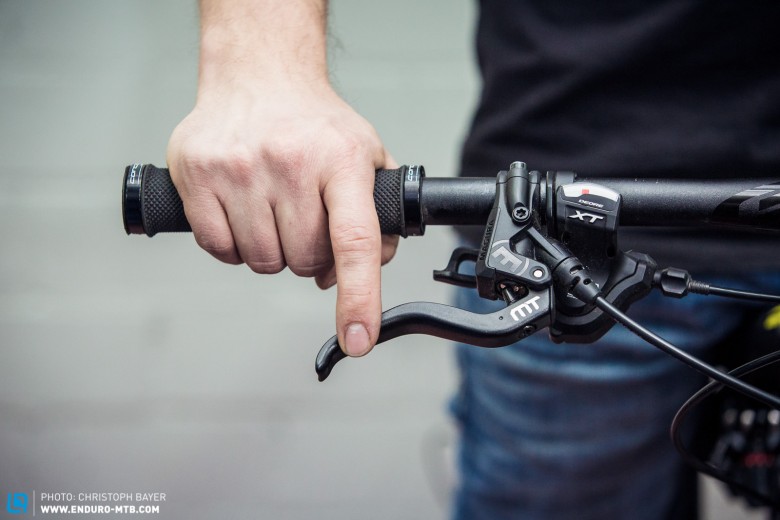It sounds so simple and trivial but in practice we see so often that it isn’t done correctly. We’re talking about brake lever adjustment. Today we’ll show you how to correct position the brake levers on your bars and how to adjust the reach.
There are a few parameters for optimal brake lever adjustment to a rider’s hands: the position on the bars, the angle of the levers and the lever reach. On higher end models you can frequently also adjust the position of the bite point. The fundamentals first: modern disc brakes have plenty of power and should therefore be operated with one finger.
Step I: The position of the levers on the bars:
The first step is important, determining the position of the brakes on the bars. They shouldn’t be too close to the grips or too far away. For an optimal leverage the finger should rest on the outside end of the lever and form a straight line with your hands and lower arms.
Attention: frequently you’ll need to position the gear levers further inwards.



Step II: the angle of the brake.
This adjustment determines your whole position on the bike and thus also counteracts hand fatigue on long descents.
The aim: lower arms, palms and stretched fingers should form a straight line when in the descending position.
It is important to make these adjustments based on your standing position on the bike. Riders who are frequently on really steep trails often prefer a slightly flatter position as their upper bodies are lower on the bike and this changes the angle of the arms.



Step III: adjusting the lever reach
Depending on the model the lever reach can be adjusted either with or without tools. Make sure that the first joint of your index finger lies on the lever in order to be always within reach. The adjustment screws are usually at the front of the brake lever.



Step IV: adjusting the bite point
The bite point is where the brake power is applied after you have pulled on the levers. Most high-end models feature this adjustment. This changes the amount of lever movement required to start the braking action. Ideally you should adjust the brakes so that the maximum power can be generated with your hands. The right adjustment is frequently characterised by personal preferences. Importantly the lever should not be able to move so far that it touches your other fingers.
Words & Pictures: Christoph Bayer
Did you enjoy this article? If so, we would be stoked if you decide to support us with a monthly contribution. By becoming a supporter of ENDURO, you will help secure a sustainable future for high-quality mountain bike journalism. Click here to learn more.









